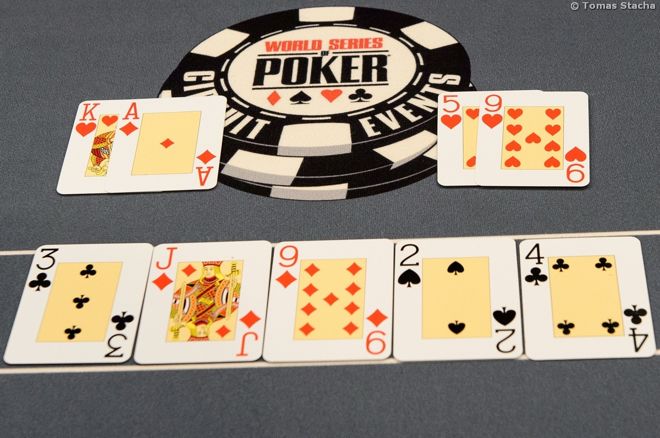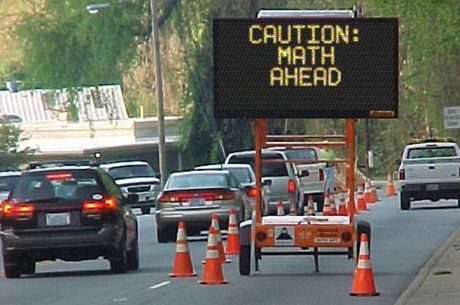10 More Hold'em Tips: Understanding Expected Value

People play no-limit hold'em for all sorts of reasons — the fun of competition, the entertainment value the game provides, the opportunities for social interaction, and more. Of course, winning money is the central motivation for serious no-limit hold'em players, and it's usually a priority even for amateurs or "recreational" players as well.
If winning money is important to you and one of the reasons why you play hold'em, understanding expected value is of primary importance.
Understanding Expected Value: Defining EV
There are a couple of ways to think about the concept of "expected value" or "EV" for short. One is simply to think of it as the average expectation of gain or loss on any given wager as indicated by the probabilties the wager offers.
Usually those explaining expected value in this way talk about betting on a coin flip, a simple enough example. You've been invited to guess which side the coin will land on, heads or tails, and to bet $1 on your choice against someone else who is also betting $1 you'll get it wrong. If you guess heads and it lands on heads, your opponent gives you $1. If you guess heads and it lands on tails, you have to give the other person $1.
You can win or lose $1 here, but that's not the "expected value" of the wager. Rather the EV of the bet is found via a formula.
- EV = (% Chance of Winning * $ Won) - (% Chance of Losing * $ Lost)
In the case of the coin flip, you have exactly a 50% chance to win $1. You also have exactly a 50% chance to lose $1. Plug those figures into the formula — you can see where this is heading — and you get 50% of $1 (or 50 cents) minus 50% of $1 (50 cents) again and a result of exactly zero:
- EV = (0.50 * $1) - (0.50 * $1) = $0.50 - $0.50 = $0.00
A wager like this would be described as one with "neutral" expected value. That said, when you make that bet the first time, you are either going to end up $1 up or $1 down. In other words, whatever the expected value of a wager happens to be, it does not necessarily have to represent a possible outcome when you make that bet. In fact, often it does not. Rather it represents an average as indicated by the wager's probabilities.
As we said, there are a couple of ways to think about EV. One is to think of it as an average as expressed by that formula. The other is to think of EV as an indicator of the long term value of making the same wager multiple times. We're essentially talking about the same thing here, just describing it slightly differently.
Instead of betting on a coin flip just one time, say you've been offered the chance to bet $1 on 100 coin flips. Each flip is still a 50-50 proposition, of course, and so in each instance your expected value is going to be neutral or $0.00. However here you will be investing $100 total, and if you are correct exactly 50 times with your guesses you'll win exactly $100 (coming out even). If you are correct more often, you'll win more and profit, and if you are incorrect more than 50 times you'll come away a loser after the coin flips.
But it doesn't matter what the results actually are — it's still a bet with zero or "neutral" EV, every time you make it. By thinking long term like this and imagining the wager being repeated 100 times, you can understand more readily whether or not you should accept the proposition and make the bet even just one time.
Let's present a wager for which the EV isn't neutral — say, a lottery. You can buy a ticket for $1 and have a chance to win $1,000,000. But your chance of winning is 1 in 2 million. What is the expected value?
Using our formula for calculating EV, we can see the EV here is actually negative:
- EV = (0.0000005 * $1,000,000) - (0.9999995 * $1) = $0.50 - $0.9999995 = -$0.4999995
Buy one lottery ticket and lose, and you're out $1. Meanwhile the EV of the wager is almost -$0.50. In order for the EV to be positive, your chance of winning the $1 million prize for your $1 ticket would have to be better than 1 in 1 million. That's not an offer you're going to see in any lottery, of course, which are always going to be negative EV wagers (unless somebody makes a colossal mistake setting up the lottery!).
Understanding Expected Value: Applications to No-Limit Hold'em
Moving over to no-limit hold'em, we are constantly being presented with invitations to make wagers like the coin flip bet or buying a lottery ticket. Being able to calculate the EV of each wager being proposed to you is crucial to being a profitable player, as you have to be able to learn which are positive EV (and take them) and which are negative EV (and avoid them).
The evaluating of EV begins with your starting hand selection. You've heard 7x2x-offsuit called the worst hand in no-limit hold'em, but in truth that proclamation is all about the expected value of the hand. The same goes for AxAx being the best starter — it has the most positive EV of all starting hands in hold'em.
Tracking programs and "HUDs" used by those playing online poker have helped pinpoint the EV of different starting hands in no-limit hold'em thanks to the high volume of hands being evaluated. They've also helped show the EV of various other aspects of the game, highlighting things like the importance of position in NLHE by showing EV to be negative (for most players) when playing from early positions (e.g., small blind, big blind, under the gun) and EV to be positive (for most) when playing from later positions (the cutoff, the button).
Those are examples of where understanding EV helps you learn which starting hands and which positions tend to be more profitable for you. You might win a single hand after limping in from under the gun with 8♣3♣, but if you did the same thing 100 or 1,000 times — that is, if you made the same "wager" by calling the big blind with your suited rags from early position over and over — you'd most likely end up a net loser, with the average amount of money lost over all of those trials an indication of the negative EV of the play.
Understanding EV helps with other specific decisions in no-limit hold'em hands, too, such as the one you face when calling a bet while holding a drawing hand. Say you have 10♣9♣ and have reached the turn versus an opponent with the board showing A♣J♦6♣2♥. There is $200 in the middle, and your opponent just went all in with his last $100.
Knowing how to calculate pot odds, you can see you're being offered a wager here that requires you to risk $100 in order to try to win $300 — that's 3-to-1 pot odds. Knowing also how to count outs, you know that nine clubs remain among the 46 unseen cards, giving you just under a 20% chance of making a flush on the river. (Let's say you trust the flush will be the winning hand — i.e., that your opponent doesn't have a set that would remove a couple of your outs since they'd make your opponent a full house.)
Maybe you didn't realize it, but when you compare those 3-to-1 pot odds and your (roughly) 1 in 5 chance of making a flush, you're doing a calculation of the expected value of making the call here. We can recall our EV formula to illustrate this:
- EV = (% Chance of Winning * $ Won) - (% Chance of Losing * $ Lost)
- EV = (0.20 * $300) - (0.80 * $100) = $60 - $80 = -$20
The call has a negative EV. This one time you'll either win $300 or lose $100, but if you were to make the call 100 or 1,000 or 10,000 times, you can expect to lose on average $20 per call. Fold!
Conclusion
Understanding expected value has the great benefit of helping you think less about the short-term wins and losses that occur with each hand of no-limit hold'em that you play and focus instead on the long-term and your results over a larger sample size of the decisions or "wagers" you are accepting (or declining).
The more positive EV bets you accept, the more you will ultimately profit, while taking more negative EV gambles will result in your losing more at the tables. As we said at the beginning, for some players of no-limit hold'em, winning money isn't necessarily the only reason they play. They may like playing more hands (including bad ones), making lots of loose calls from out of position, and never folding a flush draw when they have one.
But if profit is your goal, you need to understand expected value and how to calculate it as well as you can in every NLHE situation, thereby helping you choose wisely as you seek those positive EV spots and shun the negative EV ones.
Also in this series...
- Game Selection
- Playing Weak Aces
- Making the Squeeze Play
- The Stop-and-Go
- The Float Play
- Should You Ever Limp-Reraise?
- Stealing and Restealing
- Overbetting
- Light Three-Betting and Four-Betting
Ready to take a seat at the table? Put these hold'em tips into practice at 888poker.
Be sure to complete your PokerNews experience by checking out an overview of our mobile and tablet apps here. Stay on top of the poker world from your phone with our and Android app, or fire up . You can also update your own chip counts from poker tournaments around the world with MyStack on both Android and iOS.
In this Series
- 1 10 More Hold'em Tips: Game Selection
- 2 10 More Hold'em Tips: Playing Weak Aces
- 3 10 More Hold'em Tips: Making the Squeeze Play
- 4 10 More Hold'em Tips: The Stop-and-Go
- 5 10 More Hold'em Tips: The Float Play
- 6 10 More Hold'em Tips: Should You Ever Limp-Reraise?
- 7 10 More Hold'em Tips: Stealing and Restealing
- 8 10 More Hold'em Tips: Overbetting
- 9 10 More Hold'em Tips: Light Three-Betting and Four-Betting
- 10 10 More Hold'em Tips: Understanding Expected Value









